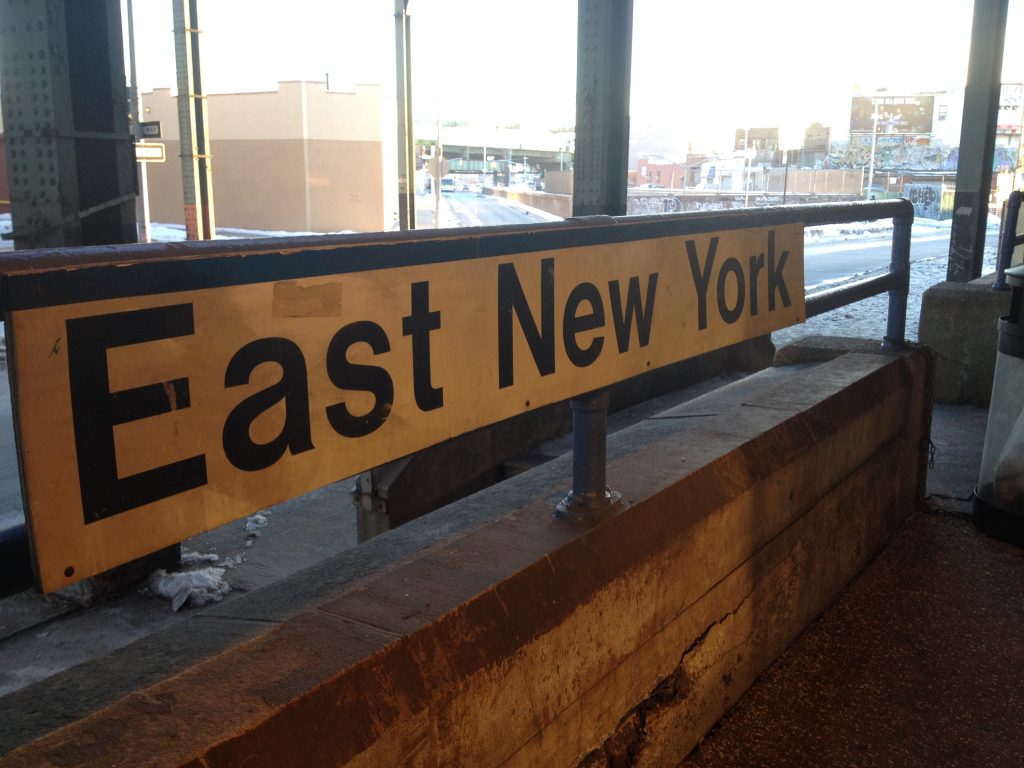East New York in northeast Brooklyn is one of the last affordable places to live in the five boroughs. Recently re-elected Mayor de Blasio aims to keep it affordable through his administration’s affordable housing plan. In April 2016, the East New York Neighborhood Plan and rezoning was approved, with an affordable housing component designed to preserve existing affordable housing, protect tenants, support homeowners, and create 1,200 new affordable housing units. According to the recent WNYC podcast, East New York, Did It Work?, the plan is working as affordable units have been built in the area while big developers who would not provide affordable units have stayed away.
Yet, a great neighborhood asset remains underutilized and decrepit – the East New York LIRR Station.
East New York is well served by six subway lines crossing the community. However, another important transit asset is completely overlooked in the East New York Neighborhood Plan – the Long Island Rail Road’s (LIRR’s) East New York Station. The station is just south of Broadway Junction and could be used to substantially reduce commute times to and from Jamaica Center and Downtown Brooklyn.
Unfortunately, low ridership counts has led to the neglect of the station by the LIRR. The latest origin/destination data records show only 30 daily Downtown Brooklyn-bound customers and 679 eastbound LIRR weekday trips to Jamaica. While the LIRR efficiently connects East New York to these two employment centers, high fares and a poor station environment are likely factors driving riders away from the station. Improving the station environment would play a positive role in preparing the area’s transportation for the demands created by East New York redevelopment. Investing in this major piece of infrastructure, and gateway to the community, could substantially increase the quality of life for those commuting to and from the neighborhood, as well as the economic viability of the area.
The East New York station is a blight on the neighborhood, affecting passengers and neighbors.
Unfortunately, the current station condition makes it an embarrassment and safety hazard to the neighborhood. Brooklyn Borough President Eric Adams is a major proponent of improving the conditions of East New York, calling for the station’s revitalization. Some potential upgrades are as follows:
- Improvements to the surrounding pedestrian/street design
- Improvements to lighting and other station conditions
- New wayfinding information, both within and surrounding the station
- Full ADA accessibility
- Freedom Ticket implementation
The station’s underpass is an unpleasant experience by anyone’s standards. LIRR customers and local residents alike use this underpass to get from one side of the station to the other, but their experience is often one of unease and discomfort. Trash is strewn across the dimly lit, damp and smelly corridor, multiple signs are defaced and ripped throughout the station, and several signs are faded and confusing. A westbound sign still refers to Atlantic Terminal as the “Flatbush Avenue” direction. There is an abundance of peeling paint and rust. These conditions are unacceptable for a train station in a City that has focused its energies on improving the housing and economic conditions in the East NY neighborhood.
The City’s recent interest in East New York has its population and employment poised to grow throughout the neighborhood. The New York City Economic Development Corporation has outlined strategies intended to double the number of area jobs, as well as to create 2.7 million square feet of commercial/industrial space just south of the station, and Department of City Planning intends for over 1,200 new affordable housing units to be built. To better support the neighborhood and current development plans, the City and MTA must identify resources to invest in the East New York LIRR station. Improvements are imperative for this area to attain the economic vitality outlined in the City’s plans.
